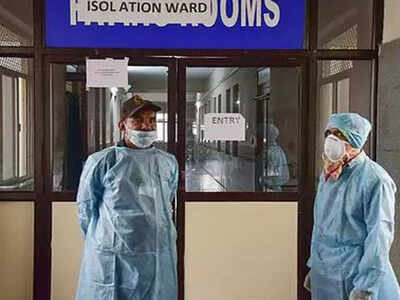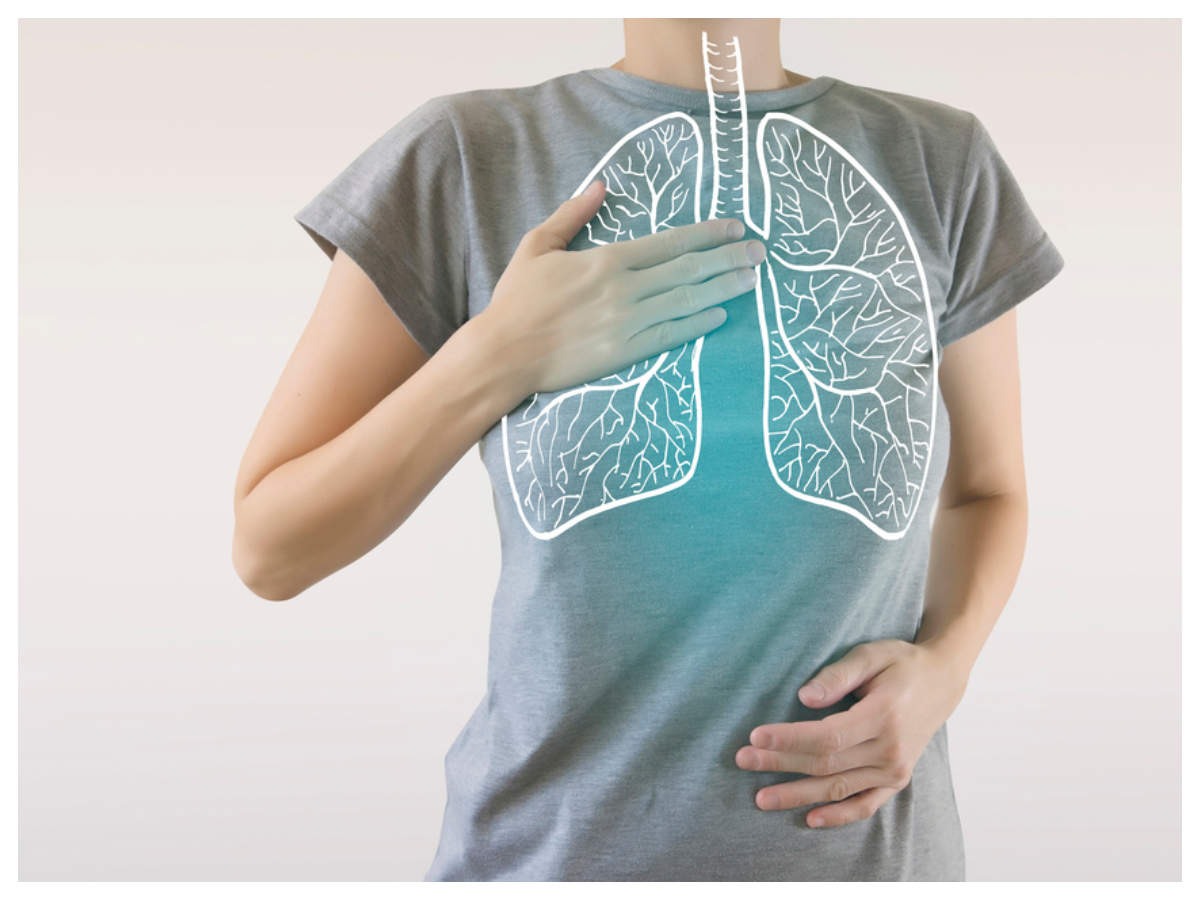
GUWAHATI: While India is reportedly between stages 2 and 3 of the spread of the coronavirus pandemic, Assam has managed to limit it to stage 1, thereby shielding the rest of the northeast.
When the first positive case was reported in Karimganj’s Badarpur after a 52-year-old returnee from the Tablighi Jamaat gathering in Delhi tested positive, Assam had already started building a tented quarantine centre in an athletic stadium complex in Guwahati with beds, linen and separate toilets for men and women that could accommodate 1,000 people.
Since the number of affected people in India started going up, Assam health department’s first strategy was to get all people with travel history quarantined, either under observation at home or in institutional quarantine centres.
“Many states have come up with their success stories in containing the pandemic. Assam’s success story is that everybody, who could be a potential virus carrier, is in institutional qua rantine centre. We have confined all of them,” Assam health minister Himanta Biswa Sarma said.
Over 75,000 people, mostly youths working across the country, who returned by the last trains and last flights, were stamped and sent to home quarantine. Each day a force of health workers, comprising ASHA and ANM personnel, would knock at the houses of those quarantined and take notes of their health condition.
None of them was found infected and was released from quarantine, but were asked to be on self-observation for any symptoms for another 14 days.
The health department was extra cautious with those who attended Tablighi Jamaat at Nizamuddin Markaz. The government compiled a list 681 Tablighi Jamaat returnees, including four from Uttar Pradesh, who came to the state for silla (spiritual retreat).
“Since they were from Nizamuddin hotspot, we did not want to take any chances and we spent days and nights to trace them out and bring them to institutional quarantine centres. Because they were staying at home after returning from Nizamuddin, we also brought their family members, who were highrisk direct contacts, to the quarantine centres,” Himanta said.
Three secondary transmissions from quarantine centres: Minister
The numbers back the claims. Altogether 35 positive cases have been reported till April 23, and 34 of them are linked to Nizamuddin, and so the state’s entire focus was on these category of people with the particular travel history. In the process, 1,421 attendees of Nizamuddin hotpsot and the family members were quarantined in a matter of a few days across the state.
“Except one (a non-Nizamuddin-linked person), we have not got any positive cases outside the quarantine centres and not from the community. Each of them had the potential to throw the state, first to stage 2 and then stage 3 of the pandemic,” he said.
Even the positive cases from secondary transmission — three so far — have been reported from quarantine centres because all direct contacts with the infected Tablighi attendees have also been confined.
“There is a possibility of secondary transmitted cases, but we have nothing to fear because every potential secondary transmitted patient is confined,” Himanta added.
The health department has collected nasal and throat swab samples randomly from 150 people in three areas in Dhubri district, where the quarantine centres have shown maximum cases of Tablighi Jamaat secondary transmission.
“This will give us an idea if any case exists outside the quarantine centres,” Himanta said. “And if it does, we will have to change our strategy,” he added.
When the first positive case was reported in Karimganj’s Badarpur after a 52-year-old returnee from the Tablighi Jamaat gathering in Delhi tested positive, Assam had already started building a tented quarantine centre in an athletic stadium complex in Guwahati with beds, linen and separate toilets for men and women that could accommodate 1,000 people.
Since the number of affected people in India started going up, Assam health department’s first strategy was to get all people with travel history quarantined, either under observation at home or in institutional quarantine centres.
“Many states have come up with their success stories in containing the pandemic. Assam’s success story is that everybody, who could be a potential virus carrier, is in institutional qua rantine centre. We have confined all of them,” Assam health minister Himanta Biswa Sarma said.
Over 75,000 people, mostly youths working across the country, who returned by the last trains and last flights, were stamped and sent to home quarantine. Each day a force of health workers, comprising ASHA and ANM personnel, would knock at the houses of those quarantined and take notes of their health condition.
None of them was found infected and was released from quarantine, but were asked to be on self-observation for any symptoms for another 14 days.
The health department was extra cautious with those who attended Tablighi Jamaat at Nizamuddin Markaz. The government compiled a list 681 Tablighi Jamaat returnees, including four from Uttar Pradesh, who came to the state for silla (spiritual retreat).
“Since they were from Nizamuddin hotspot, we did not want to take any chances and we spent days and nights to trace them out and bring them to institutional quarantine centres. Because they were staying at home after returning from Nizamuddin, we also brought their family members, who were highrisk direct contacts, to the quarantine centres,” Himanta said.
Three secondary transmissions from quarantine centres: Minister
The numbers back the claims. Altogether 35 positive cases have been reported till April 23, and 34 of them are linked to Nizamuddin, and so the state’s entire focus was on these category of people with the particular travel history. In the process, 1,421 attendees of Nizamuddin hotpsot and the family members were quarantined in a matter of a few days across the state.
“Except one (a non-Nizamuddin-linked person), we have not got any positive cases outside the quarantine centres and not from the community. Each of them had the potential to throw the state, first to stage 2 and then stage 3 of the pandemic,” he said.
Even the positive cases from secondary transmission — three so far — have been reported from quarantine centres because all direct contacts with the infected Tablighi attendees have also been confined.
“There is a possibility of secondary transmitted cases, but we have nothing to fear because every potential secondary transmitted patient is confined,” Himanta added.
The health department has collected nasal and throat swab samples randomly from 150 people in three areas in Dhubri district, where the quarantine centres have shown maximum cases of Tablighi Jamaat secondary transmission.
“This will give us an idea if any case exists outside the quarantine centres,” Himanta said. “And if it does, we will have to change our strategy,” he added.

Coronavirus outbreak
Trending Topics
LATEST VIDEOS
City
 Delhi lockdown: People flout social distancing norms in Chandni Chowk ahead of Ramzan
Delhi lockdown: People flout social distancing norms in Chandni Chowk ahead of Ramzan  How a crocodile was rescued in Telangana
How a crocodile was rescued in Telangana  'Stay at home' message passed on by canine squad of bomb detection and disposal unit of Nagpur Police
'Stay at home' message passed on by canine squad of bomb detection and disposal unit of Nagpur Police  Covid-19 crisis: Empty wallets, stomachs and promises, workers in a fix in Chennai
Covid-19 crisis: Empty wallets, stomachs and promises, workers in a fix in Chennai
More from TOI
Navbharat Times
Featured Today in Travel
Quick Links
Kerala Coronavirus Helpline NumberHaryana Coronavirus Helpline NumberUP Coronavirus Helpline NumberBareilly NewsBhopal NewsCoronavirus in DelhiCoronavirus in HyderabadCoronavirus in IndiaCoronavirus symptomsCoronavirusRajasthan Coronavirus Helpline NumberAditya ThackerayShiv SenaFire in MumbaiAP Coronavirus Helpline NumberArvind KejriwalJammu Kashmir Coronavirus Helpline NumberSrinagar encounter
Get the app



